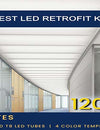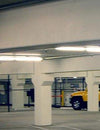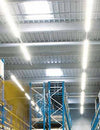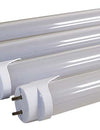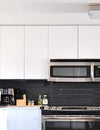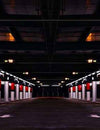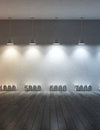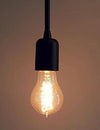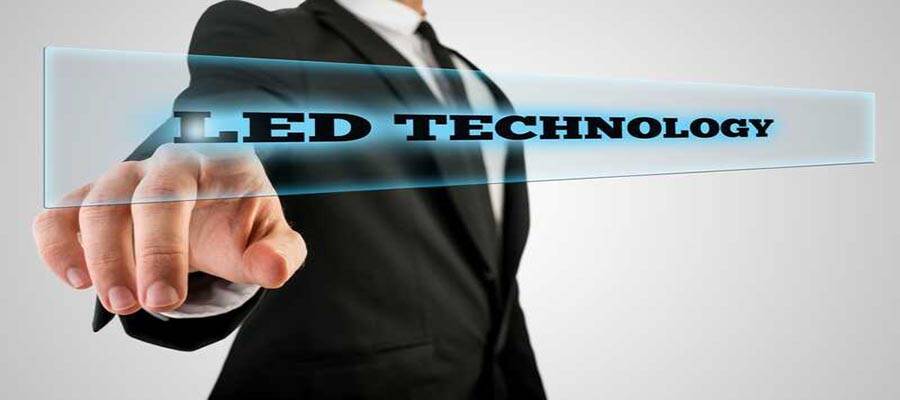
What is the difference between Integrated LED Fixtures and LED-Ready Fixtures?
Two basic types of LED Light Fixtures are currently available in the marketplace: Integrated LED Fixtures and LED-Ready Fixtures with replaceable LED Bulbs. Here are some facts to help you choose the right LED fixture type for your lighting project.
1. Integrated LED Fixtures
These fixtures are manufactured with LED (light-emitting diode) strips attached directly to the fixture frame. This fixture type is designed to provide a specific light color and Lumen output and they do not have typical “bulbs” that can be replaced. Instead, inside the fixture you will find an LED array that looks more like a printed circuit board than a light bulb. Integrated LED fixtures typically last for many years, often a decade or more. When they do burn out, rather than shopping for a replacement LED bulb, customers will order a new fixture.
Advantages:
- Never change a light bulb again! Rather than going to all the trouble to replace a burned-out bulb in a hard-to-reach fixture, these fixtures have the LED technology attached right to the light fixture, so you’ll never have to install or change a bulb again.
- No additional parts are required. These fixtures are sold as one complete unit and are “plug and play”. Plug in corded models, or hardwire to your room’s electric and you are ready to turn on the fixture.
- Easy, quick installation. These fixtures are ready to install.
- Reduced maintenance. There are no bulbs or parts to replace.
- Lower fixture costs. Integrated fixtures tend to be less expensive than their fixture and bulb counterparts.
- Theft reduction. No bulb theft in public areas.
Disadvantages:
- Disposable fixture. The entire fixture will need to be replaced when the LED strips burn out.
- Planned obsolescence. LED fixture manufacturers are moving toward the replaceable LED strips or arrays. Practically this means the original LED strips or array in the fixture can be switched out with new parts. This works in the short run, however, if you do not need to replace the LED strips or array for 10 years or so, by that time, a new LED fixture may be the preferred purchase due to upgrades and changes in LED technology.
- Limited designs. Less choice of fixture styles are available in this type of fixture.
- Not customizable. The LED diodes in this type of fixture are designed with a specific Kelvin color temperature and Lumen output. The fixture cannot be upgraded to use different color temperature or lumen output.
- Potential for difficulty in upgrading to future emerging technologies without total fixture replacement.
2. LED-Ready Fixtures with LED light bulbs
These fixtures are like traditional lighting fixtures. Each fixture is specially designed to use replaceable, energy-efficient LED bulbs. A primary benefit of the LED ready fixtures is that customers can select the appropriate bulb for their needs as long as the bulb is the right shape, size and wattage. The initial installation of the fixtures is comparable to the integrated fixtures, but replacing the bulb when it burns out is easier than replacing entire integrated fixture.
Advantages:
- Replaceable bulbs. When the LED bulb burns out, just replace the bulb. The fixture stays in place. LED tubes with a built-in power supply contain all the electronics within the tube assembly, and are easy to replace. Anyone can replace the tube, with no need for an electrician.
- LED bulb technology will continue to be available. An international standard guarantees that compatible replacement tubes will be available for the T8 assembly now and in the future. The continuing availability of LED tubes is backed up by the international IEC 62776 standards, published in December 2014.
- New LED bulbs can be purchased in desired color temperature and lumen output to match changes in your lighting needs.
- Longer fixture life. These fixtures will have a longer life rating than an integrated fixture because all parts and bulbs are replaceable.
- Easy replacement as new technologies come out (better efficiency or color rendering) In future, upgrading to the latest lighting technology can be done simply by replacing the old tubes with new standard tubes, at low costs.
- Longer warranties available than on integrated models.
Disadvantages:
- Often sold without LED tubes included. You may have to purchase LED tubes separately from the LED-ready fixture.
- Longer installation time. These fixtures frequently require some wiring to be done by the installer, and also require separate installation of the LED bulbs.
- Heavier and/or larger fixtures. These fixtures are typically heavier than their integrated counterparts, due to the extra space needed to accommodate the LED tubes and additional weight of the bulbs themselves.
- These fixtures often have industrial styling. Many LED-ready fixtures look very similar to the fluorescent fixtures they are intended to replace. Thus, as you look at the fixture, you can see the LED tubes through the fixture cover.
Which LED Fixture Type Do You Need?
When deciding which fixture type is the best choice for your lighting project, there’s a few things to consider. Overall, there is no definite answer as to which is better. Ask yourself questions that pertain to cost, light color and lumen count, and overall light quality in order to choose an option suited best for you.
When making the choice, you should also consider the responsibility for maintenance: an integrated light is considered a permanent installation, and its maintenance is the responsibility of the owner of the building. Changes to the fixture may require hiring an electrician. In a LED-ready fixture installation, the fixture is a permanent installation, but the LED tubes are not, so they can be replaced at need by the end user.
Still undecided? Consult an Orilis Lighting Specialist who can point you in the right direction.



